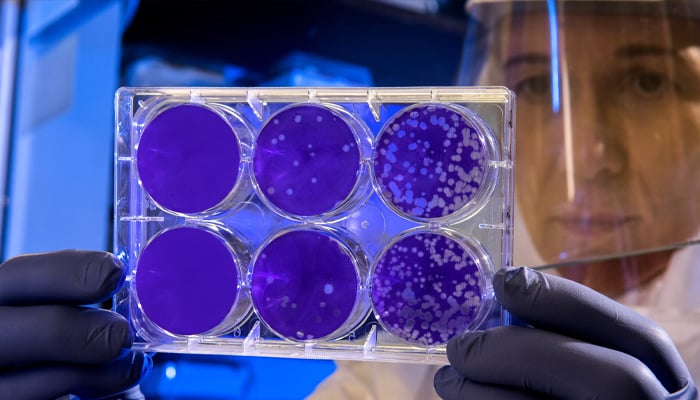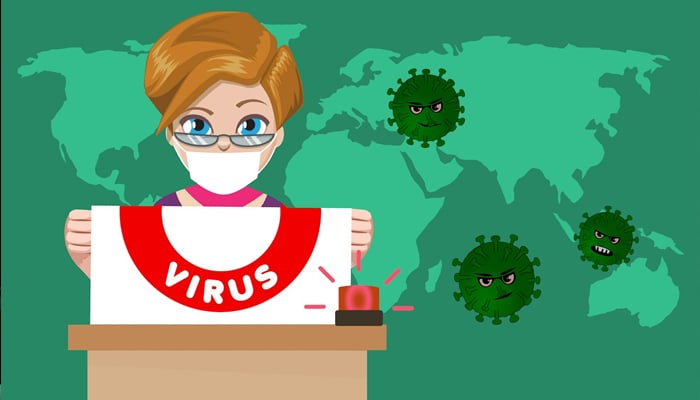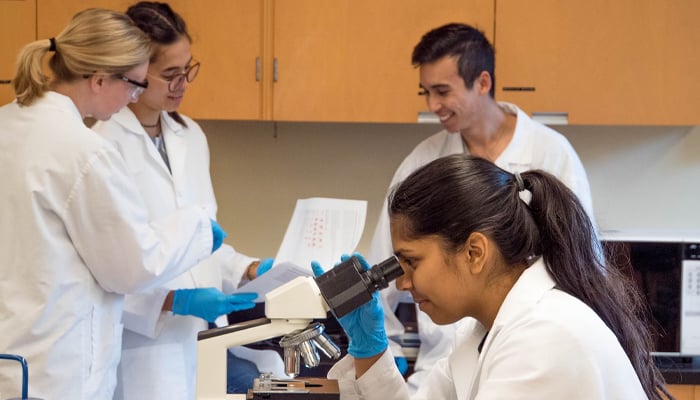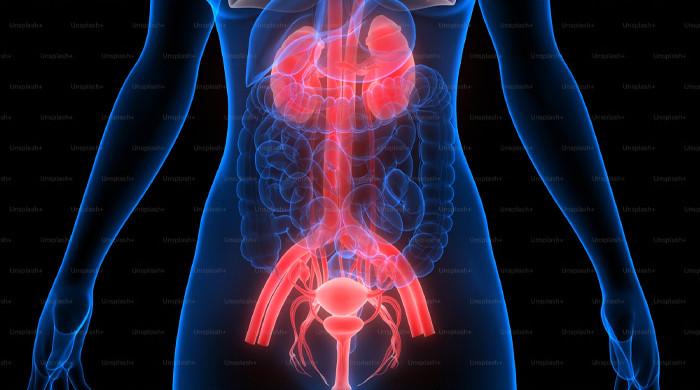Is the current avian influenza outbreak a concern to human health?
Outbreaks of avian influenza or bird flu have been reported recently in different areas and here is everything you need to know about the disease and the virus that causes it
April 30, 2024

Influenza A virus; What is Avian influenza?
Avian influenza, also known as bird flu, is an infection, caused from a type of flu virus that usually spreads in birds and other animals.
Structurally, the virus causing it, influenza A virus, is an orthomyxovirus that contains the glycoproteins hemagglutinin (H) and neuraminidase (N).
With respect to functionality, the hemagglutinin assists the viral specie to bind with infected cells by clumping red blood cells together while neuraminidase helps the virus to move through host cells and aid in its reproduction.
Can the Avian influenza / bird flu transfer and transmit into humans?

In virology, the influenza A virus, from which, one of its subtypes is the strain H5N1, has caused major outbreaks in humans as well, which include the 1918 Spanish flu pandemic, the 1977 Russian flu pandemic and the 2009 swine flu pandemic.
According to the research article, titled, An overview of the epidemiology of avian influenza, by Dennis J. Alexander, it states, “Only viruses of the genus have been isolated from birds and termed avian influenza (AI) viruses, but viruses with all 16 haemagglutinin (H1–H16) and all 9 neuraminidase (N1–N9) influenza A subtypes in the majority of possible combinations have been isolated from avian species.”
A general epidemiology of Avian influenza with types & Mortality Rate:
The influenza A virus can be divided into two groups among which the virulent viral strains are restricted to the H5 and H7 subtypes.
These subtypes can lead to the development of Highly Pathogenic Avian Influenza (HPAI) “with flock mortality as high as 100%... although not all H5 and H7 viruses cause HPAI,” Alexander’s research paper further states.
When did the Avian influenza outbreak first happen?

According to the research work conducted by Blanca Lupiani, The history of avian influenza, “While the AI (avian influenza) outbreak of 1878 in Italy, which caused extremely high mortality in chickens, was of the highly pathogenic form, the first confirmed outbreak of HPAI was reported in Scotland in 1959 [40]. Since then, more than 28 outbreaks have been recorded worldwide.”
The Highly Pathogenic Avian Influenza caused by influenza A virus strain H5N1, abbreviated as HPAI A(H5N1) virus was first isolated and identified “in a domestic goose from Guangdong province, China in 1996 and outbreaks have since been reported in domestic poultry, wild birds and humans in over 60 countries,” an article written by multiple experts, titled, Global epidemiology of avian influenza A H5N1 virus infection in humans, 1997–2015: a systematic review of individual case data, states.
Symptoms of Avian influenza:

Usually, individuals suffering from Avian influenza or bird flu suffer from conjunctivitis (redness in eyes), difficulty in breathing, mild to severe flu as well as fever.
Particularly speaking with respect to the H5N1 strain, David S-C. Hui states in the article, Review of clinical symptoms and spectrum in humans with influenza A/H5N1 infection, “The clinical spectrum of H5N1 infection in humans has ranged from asymptomatic infection or mild influenza-like illness (e.g. fever, cough, sore throat and myalgia) to severe pneumonia, ARDS and multi-organ dysfunction syndrome (MODS).”

While in the research paper, Current and future antiviral therapy of severe seasonal and avian influenza, John Beigel and Mike Bray wrote, “Most H5N1 patients present with fever, cough and shortness of breath that progress rapidly to adult respiratory distress syndrome.”
Avian Influenza treatment:
Generally, symptoms for avian influenza would be countered via an anti-viral medication prescribed by a general physician. It lowers the severity of sickness as well as risk of death.
“Treatment with anti-influenza virus antibodies could potentially be of benefit in severe influenza, by preventing the binding of virions to target cells,” Beigel and Bray stated in their article.
Current status of the Avian influenza outbreak:

The US Department of Agriculture (USDA) Animal and Plant Health Inspection Service (APHIS) reported on April 22, 2024, that they have isolated and shared 239 recent, varying genetic sequences of the H5N1 avian flu virus from poultry, wild birds, and dairy cows, which will help scientists look for new clues about the spread of the virus.
In further related developments over the past 3 days, APHIS has also reported four more H5N1 detections in dairy herds, along with more positive findings in wild birds and poultry.
Additionally, the Centers for Disease Control and Prevention (CDC) posted a recent update on its actions to look for new human infections.

According to The Guardian, an international survey will reveal that 57% of senior disease experts think that the H5N1 strain of flu virus MIGHT JUST RESULT IN A global outbreak of deadly illness, given that the mortality rate of a person infected with avian flu is over 50%.
Details of the survey, which is to be published next week, at the European Society of Clinical Microbiology and Infectious Diseases (ESCMID) congress in Barcelona, would involve the expert insights from a total of 187 different senior scientists – will be revealed this weekend.
Will the Avian influenza become the 2024 epidemic?

The World Health Organization (WHO) raised concerns over the spread of HPAI A (H5N1) virus as soon as its recent outbreak began in 2020, which caused killed tens of millions of poultry along with wiping out millions of wild birds.
Chief scientist at WHO, Dr. Jeremy Farrar, has stated how the H5N1 strain has an “extremely high” mortality rate when compared to the several hundred people who have been infected with the virus to date.
However, it was clarified that no human-to-human H5N1 transmission has yet been recorded. “H5N1 is (an) influenza infection, predominantly started in poultry and ducks and has spread effectively over the course of the last one or two years to become a global zoonotic – animal – pandemic,” he added.

Reportedly, the virus has now spread to mammal species, including domestic cattle, which has also ignited fears about the risks it has for humans.
Addressing the scenario, Farrar informed, “The great concern, of course, is that in doing so and infecting ducks and chickens – but now increasingly mammals – that that virus now evolves and develops the ability to infect humans. And then critically, the ability to go from human-to-human transmission.”
Is Avian influenza the next Covid-19?

Even though both the viral and infectious diseases have potential pandemic implications, they have significant differences between them.
In terms of origins, avian influenza majorly affects birds while Covid-19 is likely to have been spread from bats.
Even though no cases of human-to-human transmission of avian flu has been reported, Covid-19’s main route of transmission was found to be respiratory droplets released from a human’s cough or sneeze.
Symptomatically, flu, fever and cough are similar signs of both the infections however, that’s just how far the similarities go.

Avian flu leads to respiratory issues which includes shortness of breath as well as difficulty in breathing. While an individual infected with Covid-19 experiences the loss of taste and smell, nausea, diarrhea as well as body fatigue and muscle aches.
Even though Covid-19 took the world by storm with a global pandemic which began in 2019, Avian influenza outbreaks have occurred periodically in different regions mainly affecting birds and cattle, transmitting to humans via an infected animals’ bodily fluids and fecal material.
Avian influenza in the longer run:

This ongoing concern regarding avian influenza, particularly the virulent H5N1 strain, keeps experts vary of the constant threat this infection poses to birds, cattle as well as human life.
While avian influenza primarily affects birds, sporadic outbreaks amongst humans highlight the potential of an epidemic if not a global pandemic if the spread of the disease is not monitored closely enough.
As the need for vigilance in surveillance and response efforts to fight off avian influenza grows, research into its mutation dynamics, transmission patterns, host infecting factors and virulence range is crucial for better understanding and nullifying the potential risk of a severe outbreak.











